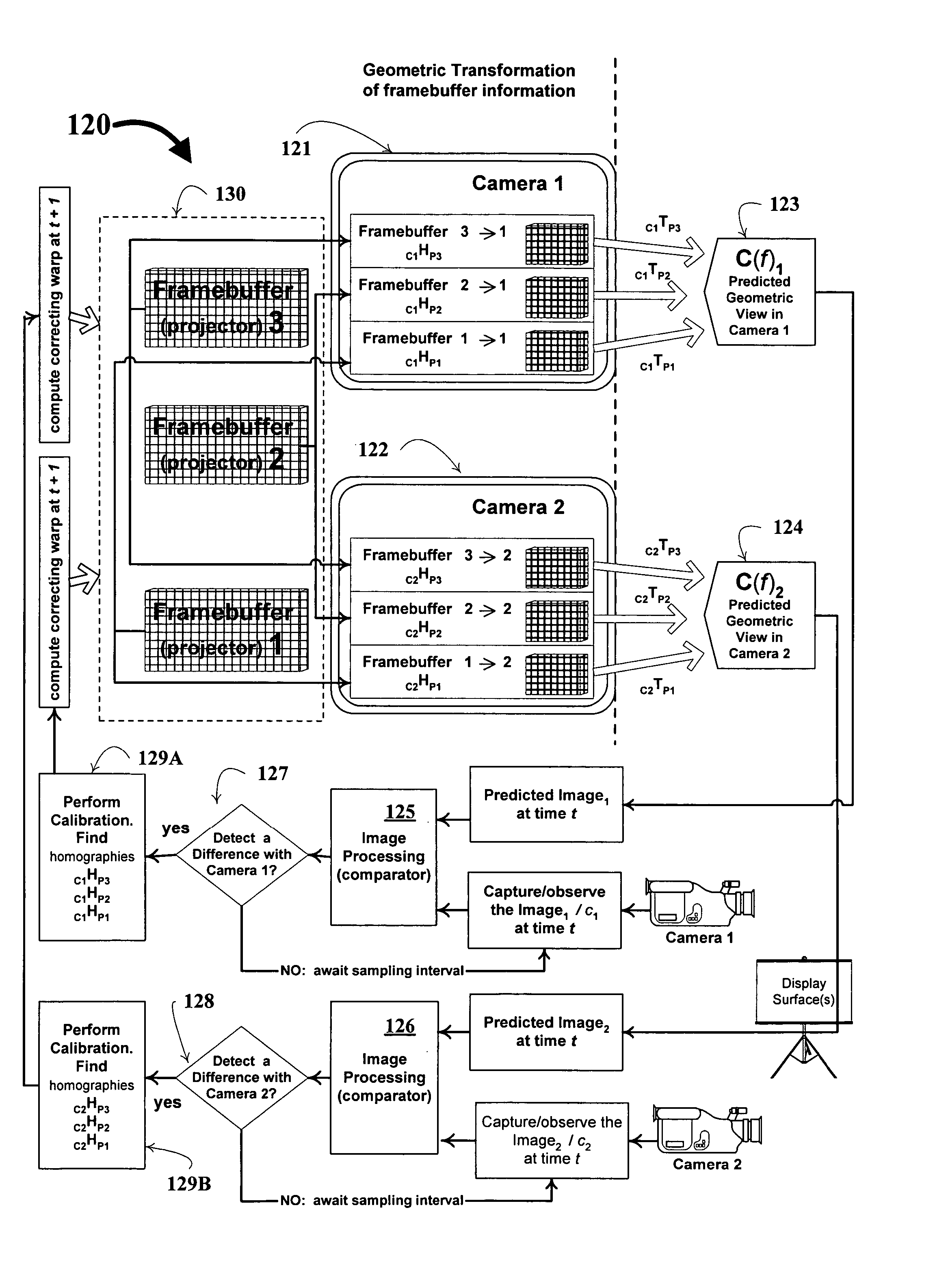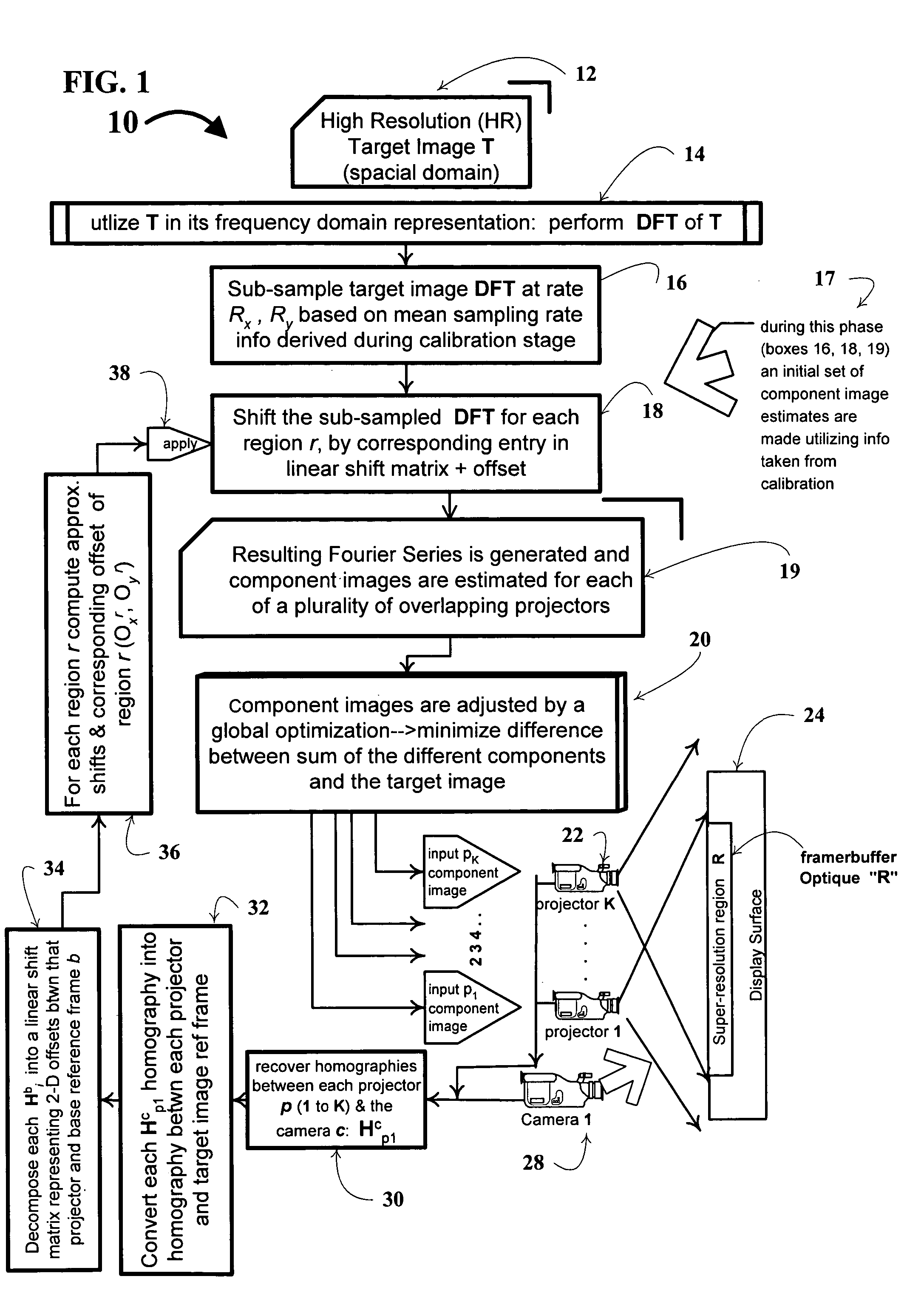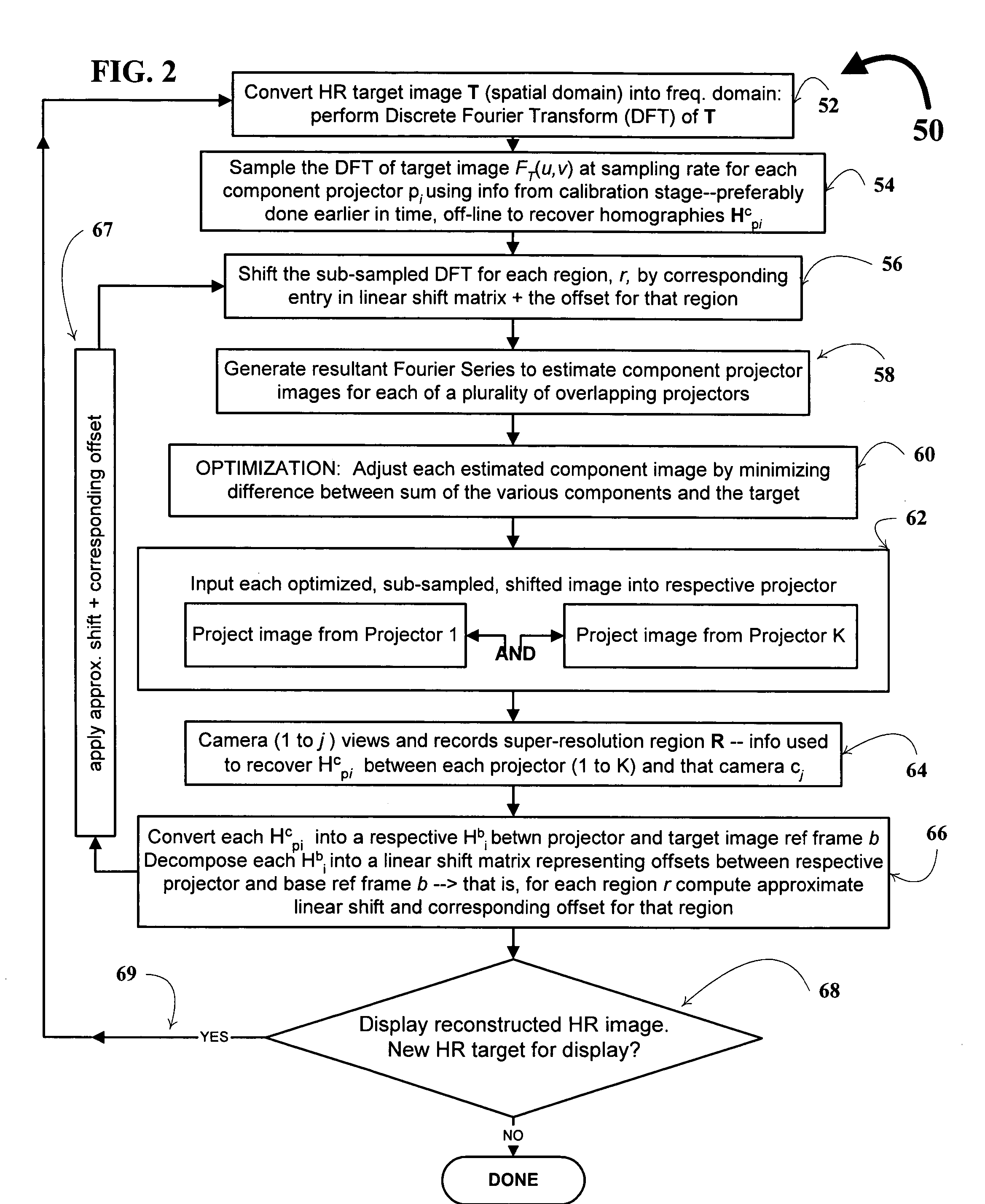Super-resolution overlay in multi-projector displays
a multi-projector display and super-resolution technology, applied in the field of light projector systems, can solve the problems of limiting the rendering of truly reliable realistic virtual scenes, dlps are proving highly scalable in resolution, and are more expensive than polysilicon panels
- Summary
- Abstract
- Description
- Claims
- Application Information
AI Technical Summary
Problems solved by technology
Method used
Image
Examples
Embodiment Construction
[0036] In connection with discussing the features in FIGS. 1-2, occasional reference will be made back-and-forth to other of the figures, all of which collectively detail core, as well as further unique and distinguishing features of technique of the invention at 10 and 50--and further providing a pictorial demonstration of the flexibility of design of this invention. As one can appreciate, the configuration of the simplified projector-camera pair system 100 in FIG. 6 is suitable for a wide variety of display shapes and environments.
[0037] FIG. 1 depicts a multi-projector-camera system 10 in a flow-schematic fashion outlining core and additional features of the invention, having up-to k number of component projectors (22), each employed to display a component image that contributes to the superimposed image--identified as Framebuffer Optique, R--onto a display surface 24. Framebuffer Optique, R is under observation by camera 28. FIG. 2 is a flow diagram depicting details of a method...
PUM
 Login to View More
Login to View More Abstract
Description
Claims
Application Information
 Login to View More
Login to View More - R&D
- Intellectual Property
- Life Sciences
- Materials
- Tech Scout
- Unparalleled Data Quality
- Higher Quality Content
- 60% Fewer Hallucinations
Browse by: Latest US Patents, China's latest patents, Technical Efficacy Thesaurus, Application Domain, Technology Topic, Popular Technical Reports.
© 2025 PatSnap. All rights reserved.Legal|Privacy policy|Modern Slavery Act Transparency Statement|Sitemap|About US| Contact US: help@patsnap.com



